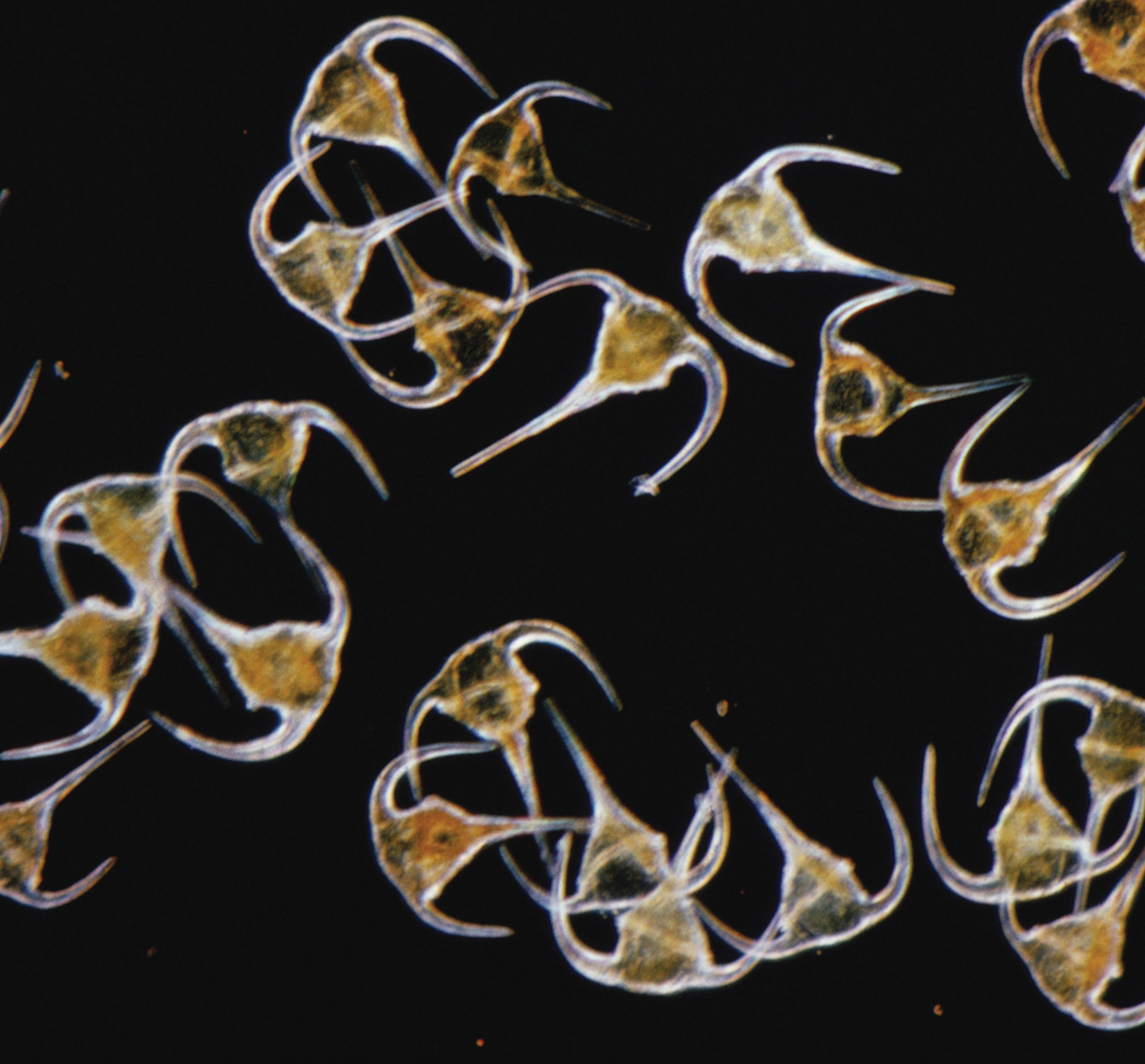CHAPTER 27 INTRODUCTION
27-1
CORE CONCEPTS
27.1 Eukaryotic cells are defined by the presence of a nucleus, but other features, particularly a dynamic cytoskeleton and membranes, explain their success in diversifying.
27.2 The endosymbiotic hypothesis proposes that the chloroplasts and mitochondria of eukaryotic cells were originally free-living bacteria that were incorporated into a host cell.
27.3 Eukaryotes have historically been divided into four kingdoms—animals, plants, fungi, and protists—but are now divided into at least seven superkingdoms.
27.4 The fossil record extends our understanding of eukaryotic diversity by providing perspectives on the timing and environmental context of eukaryotic evolution.

Eukaryotic cells have a nucleus—that’s their defining characteristic. As we will see, however, it is quite another set of features that distinguishes eukaryotes in terms of function and the capacity for evolutionary innovation. Eukaryotic diversity—the animals, plants, fungi, and protists we are familiar with—does not reflect exceptional metabolic versatility. In fact, compared to Bacteria and Archaea, the Eukarya display only a limited range of metabolisms. For example, oxygenic photosynthesis is widespread among eukaryotes, but anoxygenic photosynthesis is unknown. Furthermore, aerobic respiration is present almost everywhere, but anaerobic respiration has been reported in only a handful of species. Chemoautotrophy has not been documented in eukaryotes at all. Many eukaryotes can ferment organic substrates—yeasts are particularly important in this regard—but most use fermentation only as a supplementary metabolism and lack the diversity of reactions known among prokaryotic organisms. The reasons for eukaryotic success lie elsewhere, in their dazzling diversity of shapes and sizes.